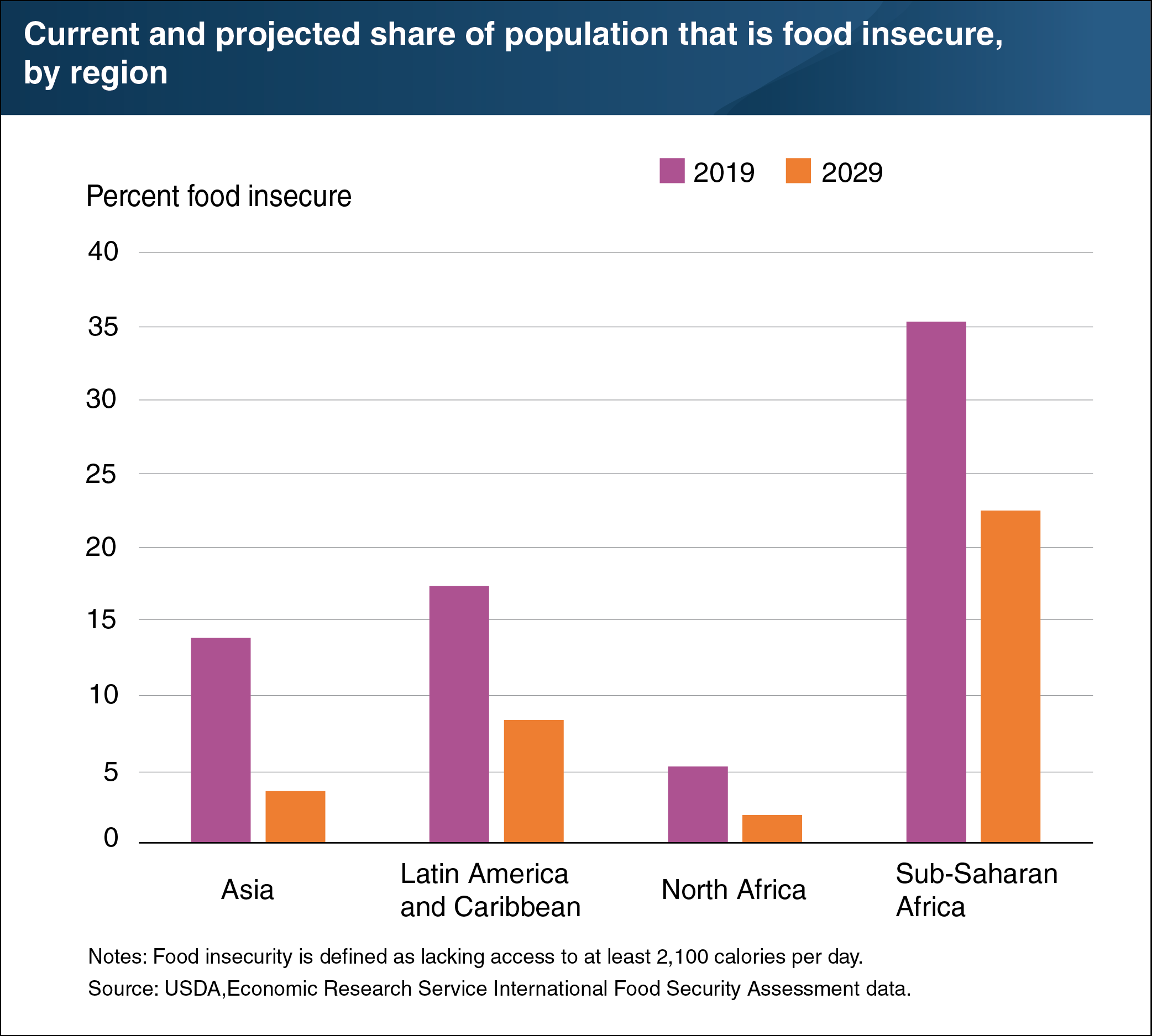Global food insecurity is projected to continue to decline over the next decade
- by Birgit Meade and Utpal Vasavada
- 8/9/2019

ERS’s annual International Food Security Assessment analyzes food insecurity conditions in 76 low- and middle-income countries spanning four regions of the world. The assessment projects per capita food consumption based on prices, income levels, and availability, and evaluates it against a caloric target of 2,100 calories per person per day, a level necessary to sustain life at a moderate level of activity. Across all countries studied, the share of the population that is food insecure will fall from an estimated 19.3 percent in 2019 to 9.2 percent by 2029, and the number of food-insecure people in the four regions will fall from an estimated 728 million to 399 million. While all regions are expected to see improvements in food security, Sub-Saharan Africa is expected to continue to experience the highest rates of food insecurity. Over the next decade, the share of Sub-Saharan Africa’s population that is projected to be food insecure is expected to fall from 35.3 percent to 22.5 percent. Although this improvement is significant, food insecurity in this region would be nearly three times that of any other region by 2029. Conversely, food-insecurity rates for both Asia and Latin America and the Caribbean are expected to fall below double digits by 2029. Beginning from the lowest level of the four regions, the rate in North Africa is expected to fall below 2 percent by 2029. This chart appears in the August 2019 ERS report, International Food Security Assessment, 2019–2029.

